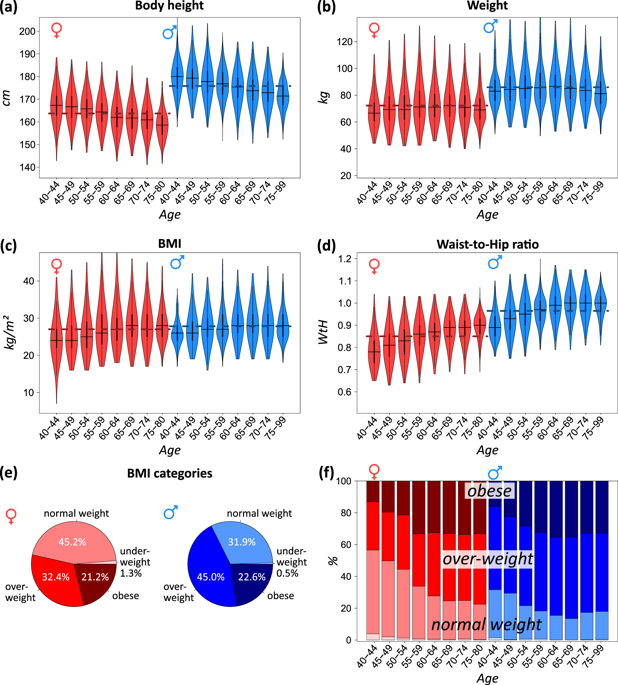npj Aging ( IF 4.1 ) Pub Date : 2020-03-24 , DOI: 10.1038/s41514-020-0043-9 Alexander Frenzel 1 , Hans Binder 1, 2 , Nadja Walter 3 , Kerstin Wirkner 2, 4 , Markus Loeffler 1, 2, 4 , Henry Loeffler-Wirth 1, 2

|
Body shape and composition are heterogeneous among humans with possible impact for health. Anthropometric methods and data are needed to better describe the diversity of the human body in human populations, its age dependence, and associations with health risk. We applied whole-body laser scanning to a cohort of 8499 women and men of age 40–80 years within the frame of the LIFE (Leipzig Research Center for Civilization Diseases) study aimed at discovering health risk in a middle European urban population. Body scanning delivers multidimensional anthropometric data, which were further processed by machine learning to stratify the participants into body types. We here applied this body typing concept to describe the diversity of body shapes in an aging population and its association with physical activity and selected health and lifestyle factors. We find that aging results in similar reshaping of female and male bodies despite the large diversity of body types observed in the study. Slim body shapes remain slim and partly tend to become even more lean and fragile, while obese body shapes remain obese. Female body shapes change more strongly than male ones. The incidence of the different body types changes with characteristic Life Course trajectories. Physical activity is inversely related to the body mass index and decreases with age, while self-reported incidence for myocardial infarction shows overall the inverse trend. We discuss health risks factors in the context of body shape and its relation to obesity. Body typing opens options for personalized anthropometry to better estimate health risk in epidemiological research and future clinical applications.
中文翻译:

人体衰老
人体的形状和成分在人类中是异质的,可能对健康产生影响。需要人体测量方法和数据来更好地描述人群中人体的多样性,其年龄依赖性以及与健康风险的关系。我们在旨在发现欧洲中城市人口健康风险的LIFE(莱比锡文明疾病研究中心)研究框架内,对8499名40-80岁的男女进行了全身激光扫描。身体扫描可提供多维人体测量数据,机器学习会对这些数据进行进一步处理,以将参与者分为不同的身体类型。我们在这里应用了这种体型概念来描述老龄化人群中体形的多样性及其与体育活动以及选定的健康和生活方式因素的关联。我们发现,尽管在研究中观察到身体类型的多样性,衰老也会导致女性和男性身体重塑。苗条的身材保持苗条,部分倾向于变得更加苗条和脆弱,而肥胖的身材保持肥胖。女性的身体形状变化比男性的变化更大。不同的身体类型的发生率随特征性的生命历程轨迹而变化。体力活动与体重指数成反比,并且随着年龄的增长而降低,而自报的心肌梗死发生率总体呈逆趋势。我们在身体形状及其与肥胖的关系中讨论健康风险因素。身体分型为个性化人体测量学提供了选择,可以更好地估计流行病学研究和未来临床应用中的健康风险。











































 京公网安备 11010802027423号
京公网安备 11010802027423号